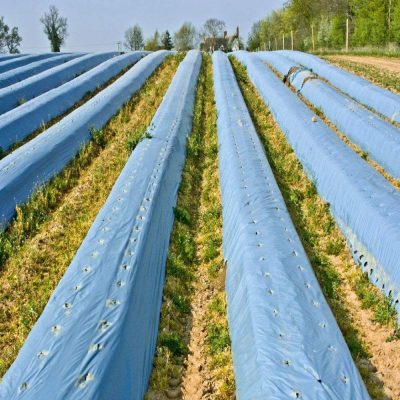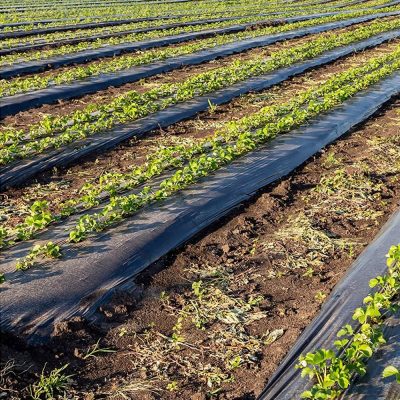There are various types of agriculture films available, each designed to serve specific purposes in modern farming practices. Here are some commonly used types of agriculture films and their respective uses:
- Mulch Films:
- Clear Mulch Films: These transparent films allow sunlight to reach the soil, promoting early season warming and weed control.
- Black Mulch Films: These opaque films block sunlight, suppressing weed growth and conserving soil moisture by reducing evaporation. They also help raise soil temperature and are commonly used for heat-loving crops.
- Colored Mulch Films: These films come in different colors (such as red, blue, or silver) and are used for specific purposes like modifying light spectrum, managing pests, or enhancing plant growth.
- Greenhouse Films:
- Polyethylene (PE) Films: These are standard greenhouse films that offer insulation, light transmission, and UV protection. They come in various thicknesses for different levels of durability and light diffusion.
- Ethylene-Vinyl Acetate (EVA) Films: EVA films have high light transmission, UV protection, and excellent clarity. They are often used for crops requiring maximum light penetration.
- Polyvinyl Chloride (PVC) Films: PVC films offer good insulation and durability. They are commonly used in colder climates or where high strength is required.
- Silage Films:
- Oxygen Barrier Silage Films: These films have an added oxygen barrier layer that helps maintain anaerobic conditions within the silage, preserving its quality and reducing spoilage.
- Standard Silage Films: These films provide basic protection and are commonly used for short-term storage or temporary covering of silage.
- Soil Solarization Films:
- Transparent Polyethylene Films: These films trap solar heat to raise soil temperature and control pests, pathogens, and weeds through solarization. They are typically used in warm climates.
- Biodegradable Films:
- Biodegradable Mulch Films: These films are designed to break down over time, reducing the need for removal after use and minimizing environmental impact. They provide similar benefits to traditional mulch films.
- Anti-Insect Nets:
- Insect-Proof Nets: These nets are specifically designed to exclude insects and pests from crops, reducing the need for chemical pesticides. They allow for airflow, light transmission, and temperature regulation.
- Shade Nets:
- Shade Nets: These nets provide shade and regulate light levels in greenhouses or outdoor settings. They protect plants from excessive sunlight, heat stress, and sunburn.
It’s important to choose agriculture films based on your specific crop requirements, climate conditions, and farming goals. Consider factors such as light transmission, UV protection, durability, heat retention, and pest management properties when selecting the appropriate film for your farming application. Additionally, follow manufacturer recommendations and best practices for installation and disposal to ensure responsible and sustainable use of these films.








